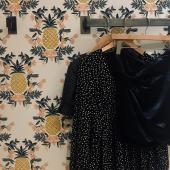How to Choose a Good Sunscreen
I wrote previously about most everything you could ever want to know about sunscreen. Check that out here.
However, most of us are just looking for some quick help for making good choices when it comes to shopping for sun protection. So, here are all the take-aways without the whys (again, find the "whys" here), plus a SHOPPING GUIDE (scroll to the bottom if that's what you're looking for) to get you on your way!
How to choose a good sunscreen
1. Avoid oxybenzone and octinoxate. They're unhealthy for you and the environment, they're banned by Hawaii. Especially avoid oxybenzone in sprays, as that maximizes exposure. Steer toward the minerals.
2. Look for zinc oxide as an active ingredient. Titanium dioxide is fine as an active ingredient, too, but it shouldn't be only titanium dioxide. You want zinc for broad spectrum protection.
3. Choose a middle-of-the road SPF like SPF 30. This makes it more likely that you're blocking both UVA and UVB rays (this has to do with the size of the mineral particles: If the SPF is really high, you might be sacrificing UVA protection.). Remember to apply more frequently.
4. Look for "non-nanoparticle" zinc oxide and titanium dioxide, but don't panic if you can't find it. Concern over nanoparticles isn't backed by scientific studies. (For the record, Naked Truth Beauty still uses uncoated, non-nanoparticle titanium dioxide in our makeup formulas).
5. Scan the ingredients for "retinyl palmitate" and avoid it like the plague. Not only is retinyl palmitate just plain bad for you (EWG gives it a 9 out of 10, 10 being the ickiest), but its damaging effects are worst in the presence of sunlight, where it speeds up the development of cancerous lesions and tumors (yaaaaay). You'd think that'd be a good reason for formulators not to put it in sunscreen, but it remains a popular ingredient in all sorts of personal care products. Disappointing and frustrating, I know.
6. Choose an oil-based product (that means no "water" or "aloe" on the ingredients list), especially if you're headed to natural bodies of water (oceans, lakes, rivers). Water-based stuff might feel better for you for everyday wear, but it's best to keep as much sunscreen out of natural habitats as possible, and oil-based means less washes off (because oil and water don't mix).
Why you should wear sunscreen every day
We all know we're supposed to wear sunscreen when hanging poolside, but what about for your daily commute to work? Yes, even then. In fact, many skincare professionals agree that the most important thing you can do to preserve skin health, prevent skin cancer, and fend off the affects of aging (for the record, I'm pro aging gracefully) is to wear sunscreen.
It might seem overkill to wear sunscreen every day when you're not getting sunburned, but burns are only half the battle (but yes, avoid those). UVA rays cause damage you can't see to the deepest layer of the skin that you may not realize for years.
My good friend, Stephany, of Amazonia Skincare likes to share this photo to demonstrate the devastating effects of sun damage. This 69-year-old man drove a delivery truck for 28 years. All of those years of sun exposure to the left side of his face caused dramatic skin damage. This is that UVA stuff I was talking about.
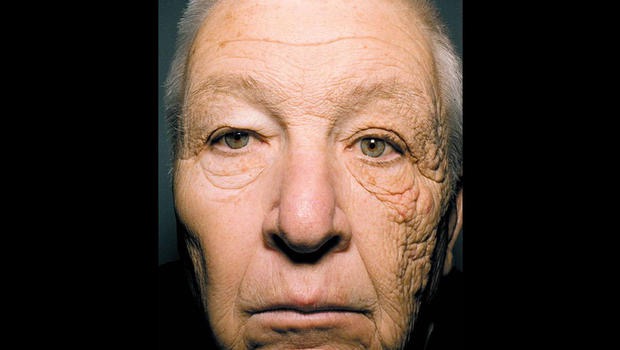
Alrighty, then! Operation wear sunscreen every day is a go, but it's got to be stuff that's good for our bodies and the earth. Where to start…
A Good Sunscreen Shopping Guide
There are so many sunscreens out there, but I'm going to try to keep it short. These are products I've tried and liked, and, I have to admit, I'd love to try more! You'll notice that these are all pretty budget-friendly options.
BODY / FACE + BODY
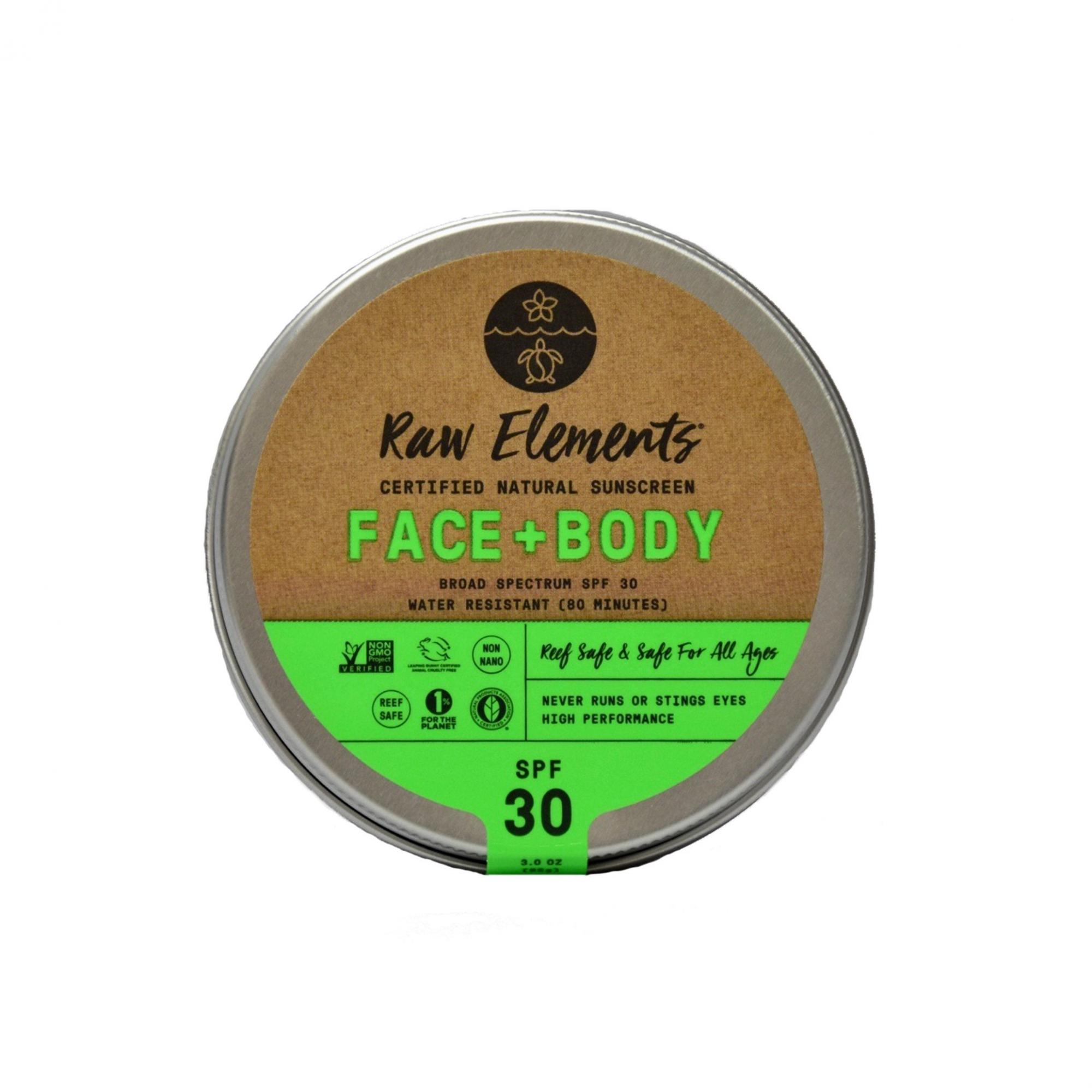
Raw Elements Face + Body 30+ Tin *Plastic-Free*
This stuff is the bomb. It literally has only 10 ingredients (you know I'm a sucker for a short ingredients list), uses only non-nano zinc oxide, reef safe ingredients and an oil-based formula, is cruelty-free, and comes in a plastic-free tin. I'm in love. While it feels heavier than normal facial moisturizer or makeup, it has skin-healthy antioxidants and hydrating, nourishing ingredients that sooth chapped skin. Plus, it contains hemp seed oil, which has a low natural SPF of its own. Double win! With that said, it does contain cocoa butter and mango butter, which both are super skin healthy, but can be comedogenic (pore-clogging). So, if you're super breakout susceptible, you may want to try a face-specific option. I haven't tried their face stuff yet, so I can't comment on it. My apologies!
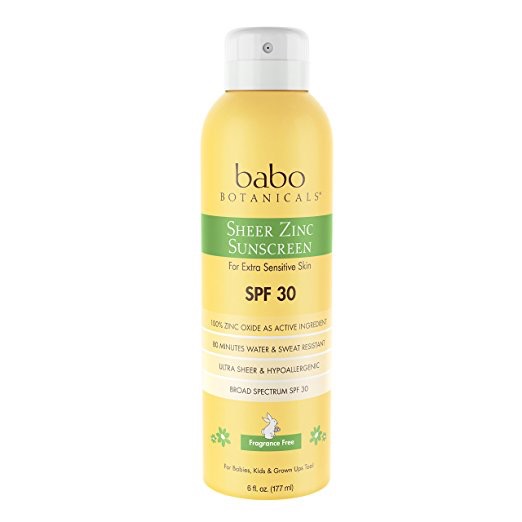
Babo Botanicals Sheer Zinc Spray Sunscreen
When it comes to choosing the healthiest sunscreen, sprays and loose powders are not ideal because inhalation is an extra (and sensitive) exposure route. In fact, the only way mineral sunscreens are bad for you is via inhalation. With that said, sprays are very convenient: They're faster, easier, and less messy. Let's be honest, we all want a spray sunscreen, so give it a go with a healthier option like this one from Babo Botanicals. While inhaling this is still less good than applying a lotion, it's leagues better than an oxybenzone-laden version. Please note that though this is a spray, it's not the same as the oxybenzone varieties. It sprays on white, and needs to be rubbed in for even protection, and also to take the white cast down a notch. So, it's a wee step-down convenience-wise from the traditional stuff, but still a much healthier choice!
FACE
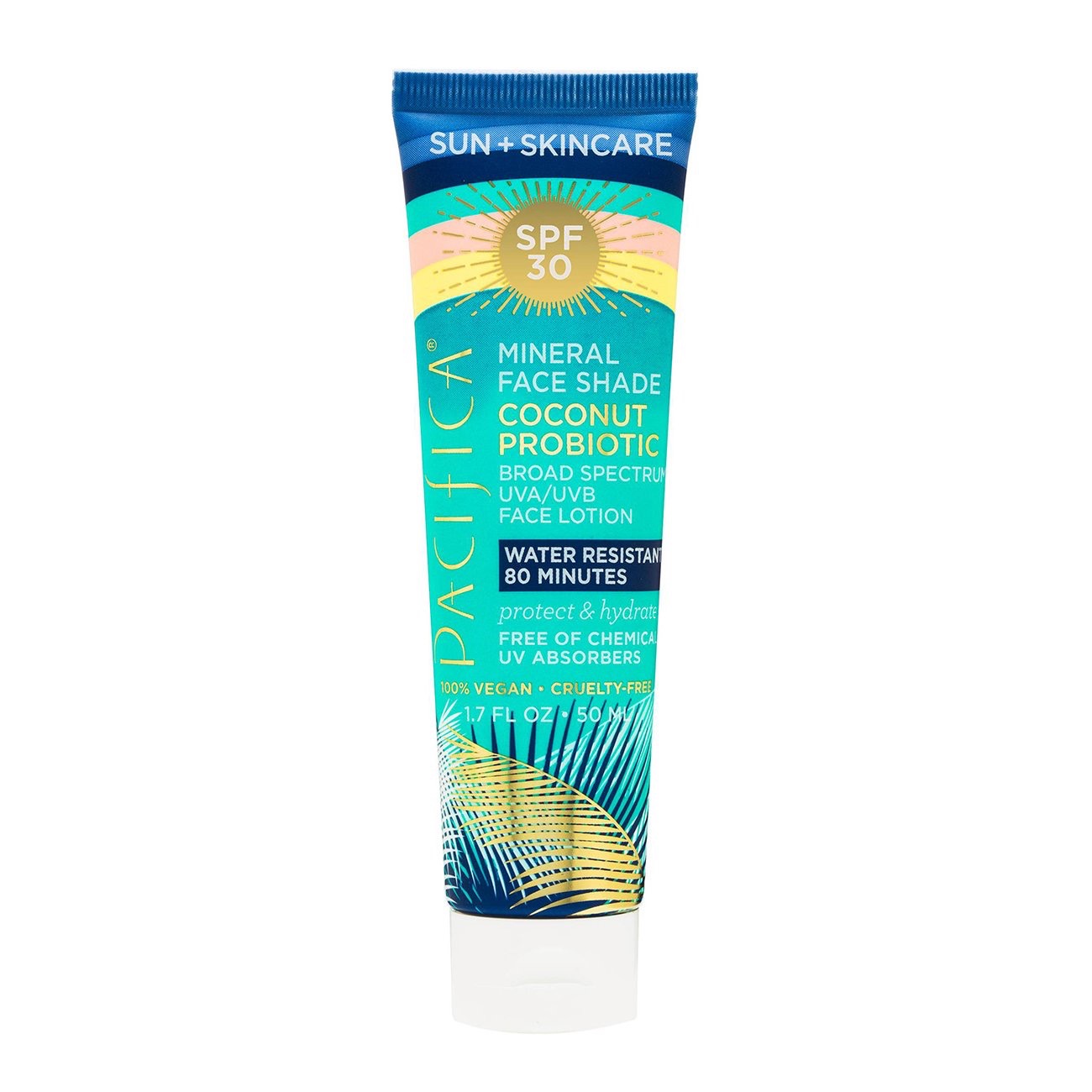
Pacifica SPF 30 Mineral Face Shade
I've talked about this stuff before, but I'll do it again. While it's a lighter shade of green, due mostly to the fact that it contains "fragrance" (that Pacifica claims is free of phthalates, which is the primary concern, here), it fulfills a critical criterion many are looking for in a facial sunscreen: It dries matte. I know, I hear the angels singing too. My skin also really, really likes it – as in seemed to improve after wearing – which is, obviously, great. Another plus, it's available at Target for your purchasing convenience. It does have a white cast, but, as I've said before, embrace it or cover it with a bit of tinted makeup. After all, the whitecast means the sunblock is there and doing its job. This was an accidental find for me (that is, I bought it on vacation in haste at Target), but we're really good friends now.
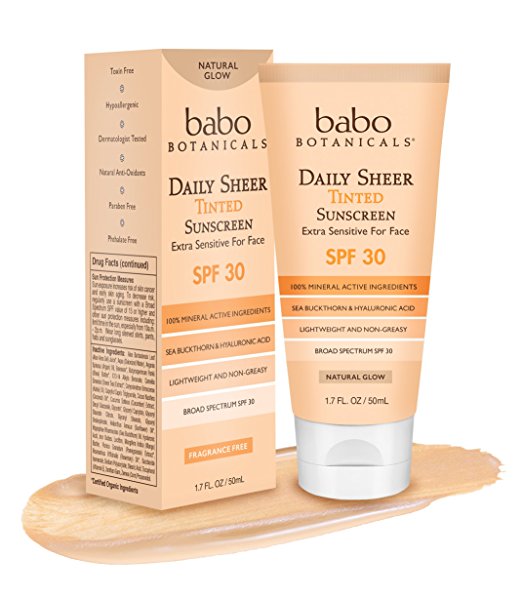
Babo Botanicals Daily Sheer Tinted Sunscren SPF 30
I really like the Pacifica stuff (above) but I don't wear makeup every day. On days where I don't want to put on any foundation (or tinted moisturizer, what have you) to cover the white cast, a tinted option is fantastic. No Caspar The Friendly Ghost, here! This stuff is quite runny (a little goes a long way), and definitely gives a dewy finish (if we're being honest, bordering on oily), so I'm still figuring out that Goldie Locks amount that feels like full coverage without being too heavy. All in all, especially for the price, it does the job for no-makeup-days where I'll still be seen in public.
BABY
My top tactics when it comes to protecting my cherub's skin are to keep her in the shade, or to keep her covered. We have a Baby Swimsuit with UPF 50 that covers her arms and legs, a sun hat (also UPF 50) that she wears (semi reluctantly) all the time, a pop-up play shade (UPF 50), and we often take her for walks under an umbrella. I'm a bit extreme when it comes to sun protection, but I swear she still gets her vitamin D! With that said, sunscreen is still important to have on hand.
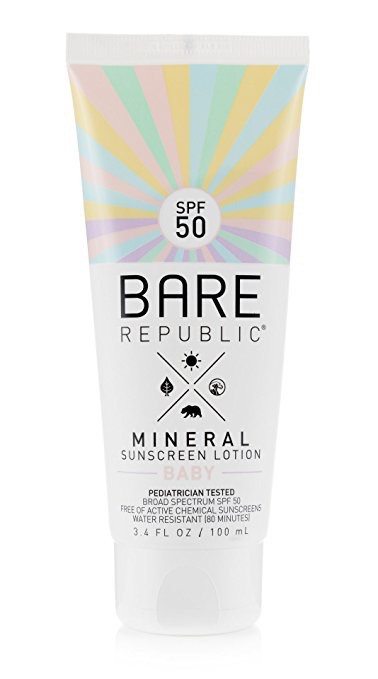
Bare Republic Mineral Sunscreen Baby
Bare Republic Baby gets a 1 on EWG (yay!), but be wary of the sport variety, as it's a less "clean" option. As a result, I see the Baby version as a great choice for the whole family. Why is there a "baby" personal care category anyway? I'm assuming "Baby" means that it's less toxic, meant for sensitive skin, and performs well, but gently… don't we all want that? End rant. Moving on. This Bare Republic product definitely gives a white cast (again, I'm pro white cast, just being transparent – yuk, yuk, yuk – about it), but it goes on pretty easily. If you've tried Badger Sunscreen, the cleanest of the clean, it can be a bit tricky to spread, and can feel kind of heavy. I don't mean to slander Badger – it's great – but I just find it less user friendly than this option. With that said, this is a "lighter green" than Badger, simply because it has a longer ingredients list, but it does the trick. Plus, it's available at Target, which is critical for those of us who need sunblock in a pinch and can't wait for shipping, or who don't have easy access to a natural food store.
What are your favorite sunscreens? There are more that I want to try, but a person can only go through so many tubes so quickly! Comment below if you have any faves.




